 Rare Birds Could Be Making Oahu Home Once Again
Rare Birds Could Be Making Oahu Home Once Again
by Christine Tarski
Hundreds of years ago, the Newell’s Shearwater, ‘a’o, were abundant, thriving, and flying over the waters surrounding all the main Hawaiian Islands. Uncovered fossils show that large colonies of these birds were established in the middle and higher levels of highly vegetated mountain peaks. Native Hawaiians hunted the birds extensively on Oahu to the point that there were no remaining birds left in the beginning of the 1800’s when Europeans began moving to the islands. With the introduction of invasive owls, cats, mongoose, pigs, and rats on other islands, the ‘a’o population was further decreased.
Although they were once believed extinct, important new research suggests ‘a’o may be living and breeding on Oahu. Established as a new species in 1900, the ‘a’o were sadly declared extinct in 1908, but were amazingly rediscovered at sea in 1947. Biologists were thrilled to find breeding pairs on Kaua’i in 1967. In the 1990’s, ‘a’o’ numbers were estimated at 20,000 breeding pairs. ‘A’o’s are nocturnal and make nesting areas by burrowing into sheer mountain cliffs covered with dense vegetation. These two facts made studying the remaining birds very difficult.
We know that ‘a’o’s lay a single egg around June, which is incubated by both parents. Once the chick hatches, both parents continue to care for and feed the chick collaboratively. Parents may fly hundreds of miles and return at night to feed the chick. By November, the chick fledges and is on its own.
In the fall of 1992, Hurricane Iniki wiped out many of the chicks who were close to fledging. Further decrease in the population of these seabirds has resulted from predators, light pollution, collision with power lines/wind turbines, habitat loss, and possible disease.
‘A’o’s are now considered classified as threatened by both state and federal governments. Breeding colonies are mainly on Kaua’i, with smaller colonies on Hawai’i, Lehua and Molokai. ‘A’o’s have been seen on other islands occasionally, including Oahu, but were considered birds that were thrown off course by storms or confused by city light pollution.
Since the 1990’s, numerous groups have been working to implement conservation measures. These measures include hooding all street lights on Kaua’i and reducing resort lighting, initiating and increasing predator controls, and establishing native plant life in nesting areas.
For the U.S. Fish and Wildlife Service (USFWS) recovery action planning, Pacific Rim Conservation’s Lindsay Young conducted a statewide survey of several seabirds, including ‘a’o’s, during 2016-2017. Her team used acoustic recorders, putting the devices in very remote high mountainous areas, sometimes using helicopters, sometimes climbing and scaling dangerously steep crags. Although Oahu was not included in the islands to survey, Young, who lives on Oahu, decided to place recorders in 15 places on this island.
Her team was very excited to hear calls of the ‘a’o over the two years of recording. ‘A’o were heard at two places on Oahu: one was on the leeward slopes of Mount Kaala in the Waianae Mountains and another at Poamoho in the Koolau Mountains.
Although there could be nesting colonies on Oahu, Young feels these also could be “young birds from other islands that are searching for mates and breeding sites. Either way, it gives us hope that we will be able to … attract them to nest on an island where they were once abundant.”
So, how do you and I recognize these once extinct birds? ‘A’o or Newell’s Shearwater are highly pelagic (on the open ocean) throughout the year. From April through November, ‘a’o’s can be seen in the Hawaiian Islands. The rest of the year, they take to the tropical ocean, as far west as the Mariana Islands and as south as Samoa. They are 13” in length with a wingspan of 8.8 – 9.8”. Both male and females are a very dark brown above with a white throat and underparts. Their bill is also dark with a hooked tip while the legs and feet are pink. When seen flying, these birds fly fast and low over the water with rapid wing beats and fewer glides.
‘A’o’s will dive into the ocean and actually swim down to 30’ with their wings partially folded to catch their prey. They gather with other seabirds and look for schools of tuna. The tuna drive smaller fish and squid to the surface where the ‘a’o’s happily feed. Their call, usually only heard in nesting areas, sounds like a donkey braying.
As well as watching the ocean for seals, sea turtles, whales and dolphins, be sure to also look up to the sky, and keep your binoculars ready. You could very well spot an ‘a’o for yourself.
Hawaii Marine Animal Response (HMAR) is a first responder for Hawaiian monk seals and sea turtles on Oahu and we also handle rescues and transport for seabirds that may need assistance. If you see a seabird that may need help, please call our hotline at (808) 687-7900. If you see a marine mammal or sea turtle of concern, please call us (888) 256-9840. Learn more about HMAR, Hawaii’s protected marine animals and how you can help HERE.
